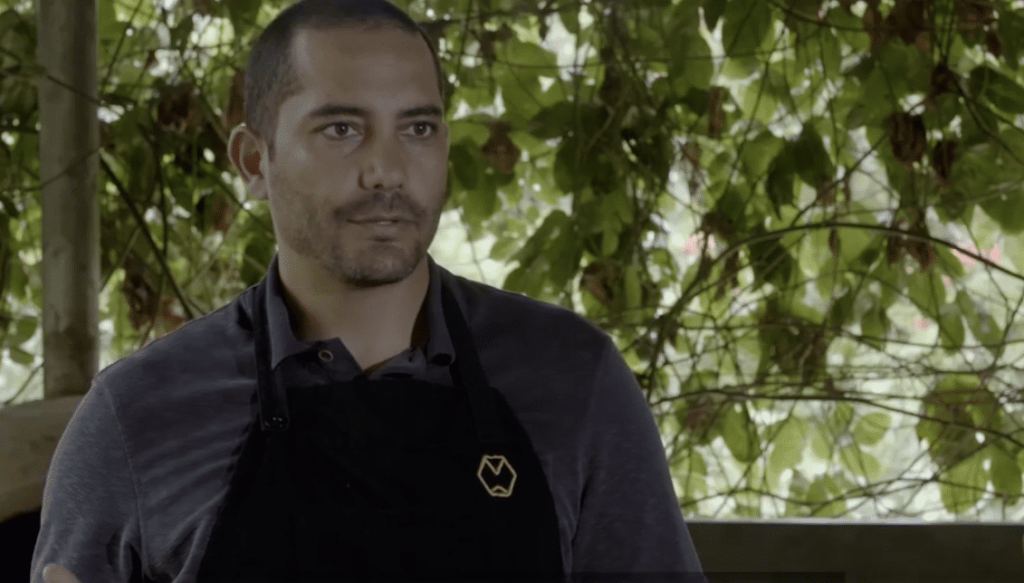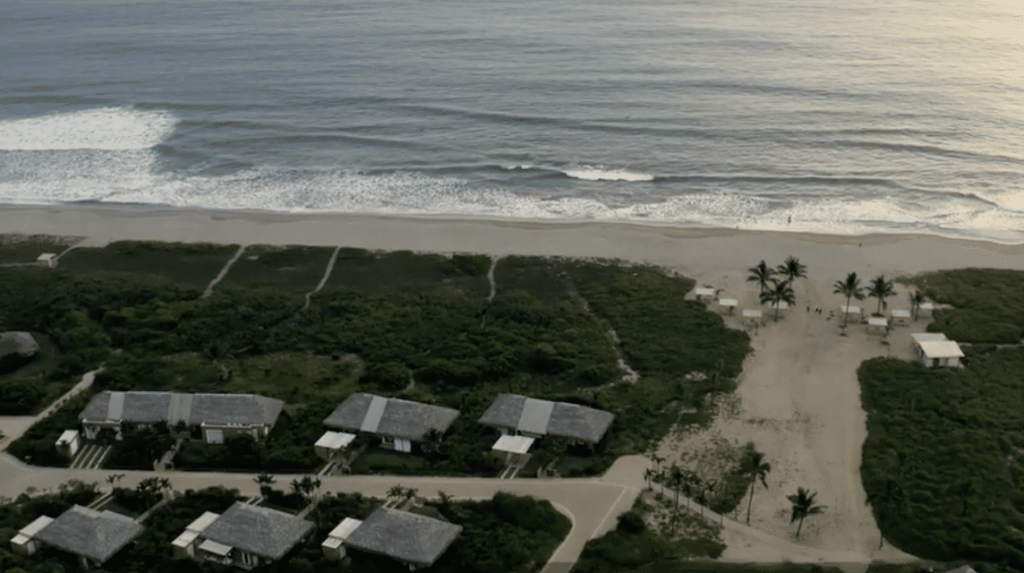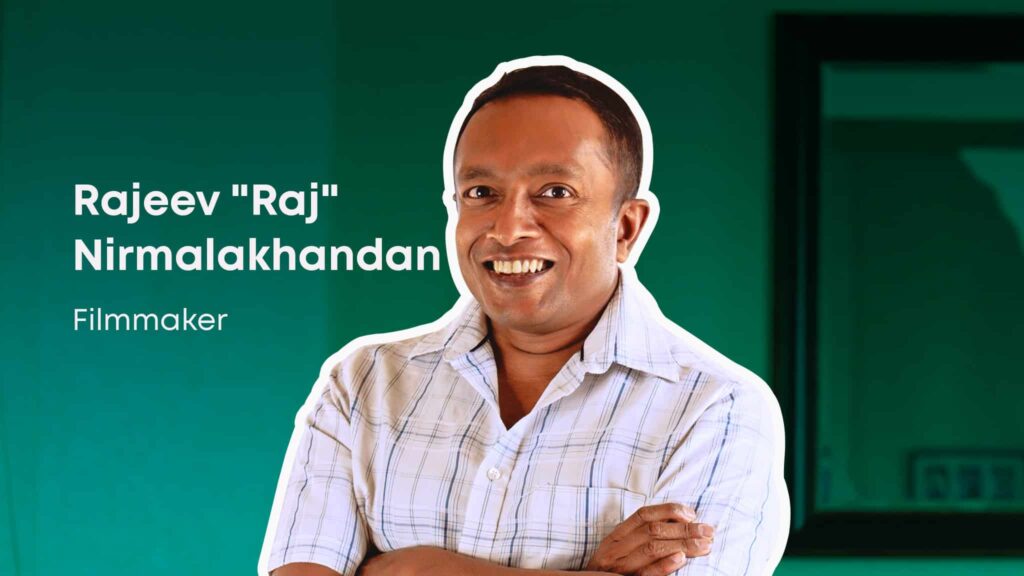Our hero is an established figure within the world of culinary arts. A contestant on Netflix’s critically acclaimed cooking show The Final Table, Rodrigo Pacheco is using his platform to make a lasting impact on the world. His restaurant and “edible forest” Bocavaldivia is revolutionizing the food industry, creating a template for an environmentally friendly method of production, which Rodrigo believes can be replicated throughout the world.
What Makes Bocavaldivia Special?
Rodrigo’s Bocavaldivia — located off the coast of his home country Ecuador — is more than a restaurant. Spanning over 200 acres of once-barren land, Rodrigo and his crew have spent years reforesting the area. They grow foods native to Ecuador (including purple potato, corn, cacao, papaya, peppers, pineapple, avocado, chilies, and pumpkin) and use this produce to create the restaurant’s dishes, all inspired by indigenous cuisine.

Bocavaldivia is self-sustaining, an is reliant on the edible forest to provide the organic produce used to create the restaurant’s unique dishes. While this is obviously very cool, you may be thinking, “But what makes it heroic?” Well, by severing its dependence on industrialized food production, Bocavaldivia is combating climate change.
How Bocavaldivia is Combating Climate Change
Through reforestation, Rodrigo and his crew have already done wonders for their local environment. Trees absorb carbon dioxide, and therefore less CO2 is released into the atmosphere (this is a major contributing factor to climate change) as a result of reforestation. Additionally, an abundance of trees will absorb air pollutants and restore the habitats of many plant and animal species that have lost their homes due to deforestation.
“We need to see trees and plants as the highest technology,” Rodrigo tells us. “They are working for us to create a better environment, a more rich environment… the more plants, the more climate-proof we are, the more resources we have, the more carbon we sequestrate, the more food we can get.”

Unfortunately, the modern food industry is a major contributor to climate change. According to the New York Times article “Cutting Greenhouse Gases From Food Production Is Urgent, Scientists Say,” “Food production results in emissions of carbon dioxide, methane and other planet-warming gases in many ways, including land clearing and deforestation for agriculture and grazing, digestion by cattle and other livestock, production and use of fertilizers and the cultivation of rice in flooded paddies. Overall emissions are equivalent to about 16 billion metric tons of carbon dioxide a year, or about 30 percent of total global emissions.”
By rejecting the industrialized model of food production, Bocavaldivia is setting the standard for a future of environmentally sustainable gastronomy.
What Makes Rodrigo Pacheco an Everyday Hero?
Rodrigo’s experience in the food industry long predates his appearance on The Final Table. After studying culinary arts at Ipstitut Paul Bocuse—a highly revered French culinary school—he went on to land jobs at French restaurants with Michelin stars, including Alain Chapel, La Palme d’Or, and Michel Bras.
Note: According to the Institute of Culinary Education, “Plain and simple, a Michelin star is a badge of honor, regardless of how many a restaurant receives (between one and three, with three being the highest caliber).”

With his appearance on The Final Table, he could have easily gone down the “celebrity chef” road. However, Rodrigo does not see his passion for cooking as a mere avenue for fame. He sees cooking as an act of expression, a medium by which he can make positive change.
“Gastronomy is a vehicle to convey a message,” he tells us. And what better way to convey a message than through something as universal as cooking?
A Tribute to His Culture
“This is not just any land,” Rodrigo says of the land on which Bocavaldivia resides. “This is 12,000 years of human history, very successful human history. The Valdivia culture is the oldest culture in all of the Americas. It’s the first culture that did agriculture, pottery, and navigation of all the American continents.”
Rodrigo does everything he can to preserve the practices of the people who occupied the land beforehand. He claims that he learned more studying their methods of cooking than he did working at any Michelin 3-star restaurant. He replicates the practices of his own culture to a tee.
Did you miss Rajeev “Raj” Nirmalakhandan’s Featured Showcase?

For example—as he explains in his CNN interview—even Bocavaldivia’s straws are inspired by indigenous culture. “I learned in the Amazon that they use the papaya straw. The papaya branch is totally empty inside, so they use a huge straw to drink the chicha [a fermented yuca drink].
When I learned that, we transformed the bar of our restaurant with those straws, and we have served over 40,000 of those straws over the course of nine years.”
Replacing plastic elements with elements from nature is just another example of Rodrigo’s commitment to conservation.
Conclusion
Instead of going in the self-serving direction of fame and fortune, Rodrigo has used his talents to become an everyday hero. What he is doing with Bocavaldivia is revolutionary, something that if adopted by other restaurants, could potentially slow down the effects of climate change. He sees the connections between his first love, food, and the environment, and he makes every effort to bridge the gap between the two. We have been proud to feature him on Your Everyday Heroes.
Resources
If you’d like to learn more about Rodrogo Pacheco and Bocavaldivia, please consider delving into the resources below.
- Rodrigo’s Instagram
- Bocavaldivia’s official site
- CNN’s video profile on Rodrigo